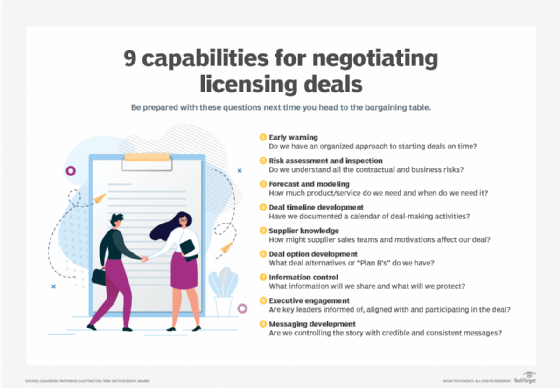Name-brand server hardware vendors have lost considerable market share to white box suppliers over the last several years. As a result, they employ a transactional game using ingrained sales tactics during server hardware deals and server maintenance contract negotiations throughout the sever lifecycle. One strategy organizations use to counter these often-aggressive sales strategies is to threaten to go with a third party during negotiations with their supplier.
But how effective is exploring alternatives to your vendor during server hardware and maintenance contract negotiations? Do enterprises tend to follow through with the threat or are they -- more often than not -- simply using it as an exercise to determine a baseline and get a better deal with their current supplier?
If you asked analyst Danilo Milevsky, of IT consultant firm ClearEdge Partners, a few years ago, he would have said most of his clients don't follow through. But things have changed, he said in answer to a question about the subject during the webinar Moments of Truth in the Server Lifecycle, which Milevsky presented with fellow ClearEdge analyst Atish Patel.
"In the past two, three years, we've really seen most of our clients follow through," he said. "It used to just be a tactical play and kind of a threat and an exercise; whereas, now, I'd say probably 30% to 50% of our clients do go to a third party and follow through."
They don't always follow through for their whole IT environment, however. Sometimes, they end up going with the alternative for just a piece of it, Milevsky added.
"Because even if you're able to peel off 25% or 50% of your environment, that's 50% of your spend that IBM is not getting or that [Hewlett Packard Enterprise] is not getting," he said. "So, they're going to be worried about that, and they're going to feel the threat, and they're going to come back with a competitive offer."

So, in short, the answer is yes. The threat of going with a third party, rather than your current provider during server maintenance and hardware refresh and renewal negotiations, works. Furthermore, many organizations actually follow through with the threat by changing suppliers -- at least, for part of their overall contract with their server vendor.
They are also using the threat tactic also as an exercise -- sometimes, simultaneously -- Milevsky noted. It depends on the preferences of the business.
"There's definitely a value of keeping your OEM maintenance versus a third party," he concluded. "You might have those needs, you might need the firmware and software upgrades, you might not. So, it really comes down to evaluating what your business needs are -- and what the monetary value is and your monetary needs are -- to counterpose those two things."
About ClearEdge Partners
Founded by senior sales executives from large IT suppliers and informed by current market analytics, ClearEdge enables CIOs and their teams to make more competitive IT investments. By combining rigorous inspection and IT financial expertise, they identify risk and opportunity, align internal teams, and maintain leverage throughout the lifecycle of supplier relationships. As a result, their clients maximize the value of their investments by unlocking millions of dollars from legacy spending and redirecting funds toward IT modernization, digital and cloud transformation with confidence and speed.
"tactic" - Google News
September 03, 2020 at 08:00PM
https://ift.tt/3hWLR3g
Is third-party threat a viable server maintenance contract tactic? - TechTarget
"tactic" - Google News
https://ift.tt/2NLbO9d
Shoes Man Tutorial
Pos News Update
Meme Update
Korean Entertainment News
Japan News Update
Bagikan Berita Ini















0 Response to "Is third-party threat a viable server maintenance contract tactic? - TechTarget"
Post a Comment